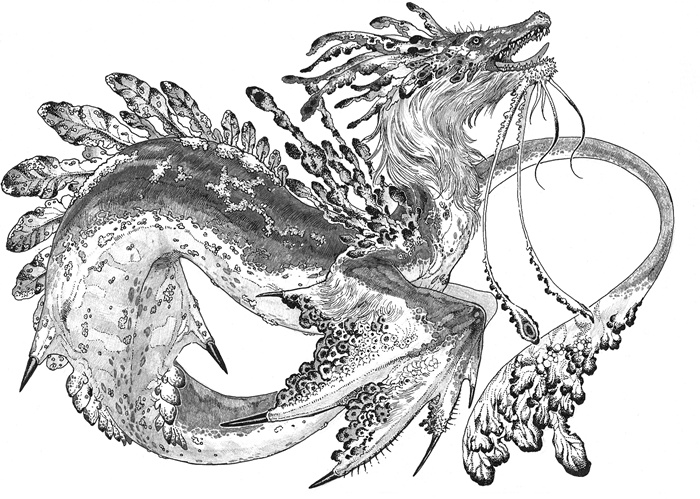

What a spectacularly gruesome way to go.īy the Renaissance, during the great age of maritime exploration, improbable sea monsters commonly decorated maps. (It is Virgil’s Laocoön who coins the famous saying about not trusting Greeks who bear gifts.) Two immense serpents, with fiery eyes, flickering tongues, hissing mouths and blood-red crests, suddenly emerge from the waves, before wreathing Laocoön and his sons in massive coils and devouring their wretched limbs. In Book II of the Aeneid, Virgil offers a chilling account of the death of Laocoön, who was eliminated by Minerva because he realised that the Trojan Horse was a trick.

This impressive marble group, which Pliny praised as “a work to be preferred above all others”, also contains sea monsters: two sharp-fanged sea serpents that writhe around the agonised Trojan priest Laocoön and his innocent sons. It turns out that they were the same trio, from the island of Rhodes, credited by the Roman writer Pliny the Elder as the artists responsible for the famous Laocoön, now in the Vatican. Intriguingly, one of the fragments is inscribed with the names of the artists who carved the sculpture. Although only fragments of the sculpture survive, Scylla’s top half took the form of a gigantic, bare-breasted woman, while her nether regions consisted of several vicious dogs, emerging from her genitals, clawing at Odysseus’s crew. In this study, we will attempt to collect the largest number of folk myths and folktales associated with fish in Bahrain, and to compare them to similar tales and legends from other parts of the Arabian Gulf.In a natural grotto near the coastal Italian town of Sperlonga, where he had a seaside villa, the Roman Emperor Tiberius displayed several dramatic marble sculptures – including a terrifying vision of Scylla, set on an “island” within a pool in the middle of this enormous cave, devouring Odysseus’s companions. The folktale’s role is not limited to the explanation of a phenomenon, it also includes a lesson and wisdom some tales were reduced to a proverb that serves the same purpose. Some folk myths were attempts to explain phenomena that sailors witnessed but did not understand, so they tried to explain them with fictional tales or legends. In the Arabian Gulf, folk memory abounds with knowledge associated with fish many legends, anecdotes and proverbs are associated with types of fish in Bahrain and throughout the Gulf. The dugong is known as a sea cow in the Arabian Gulf, a name mentioned in books of Arab heritage. Its ancient scientific name is Halicore, which is derived from two Greek words meaning ‘sea nymph’, not ‘sea bride’. The myth of the sea girl was based on the dugong. Some of these myths made their way into the folk culture of Bahrain and the Arabian Gulf, resulting in a legendary creature known as ‘Bu Draya'.Ĭommon people in Bahrain and the Gulf believe in the existence of ‘Bu Draya', which originated with a creature known in Persian as the ‘King of Draya’ (the king of the sea). Some have even connected these myths to the dugong or sea cow. The ‘bride of the sea’ and the ‘sea nymph’ are terms that do not exist in Arab heritage they were invented by common people and made popular by the media. These myths evolved when stories were written down, and secondary legends were created from the old ones. These myths originated with the seal, specifically the monk seal. In Arab heritage, there are water nymphs and mermaids that are similar to the Draya in Persian heritage, to the mermaids and mermen of Western culture, and to the Sirens of Greek mythology. In books about heritage and mythology, we find different legendary creatures that are part human and part sea creature. Every culture includes people who do not believe in the existence of these mythical creatures, but there are always others who believe in their existence, especially since myths have become part of the collective folk memory. They can be found in all known cultures, and each culture has at least one specific mythical creature. Mythical creatures, mythological animals and mythical beings are widely spread concepts.


 0 kommentar(er)
0 kommentar(er)
